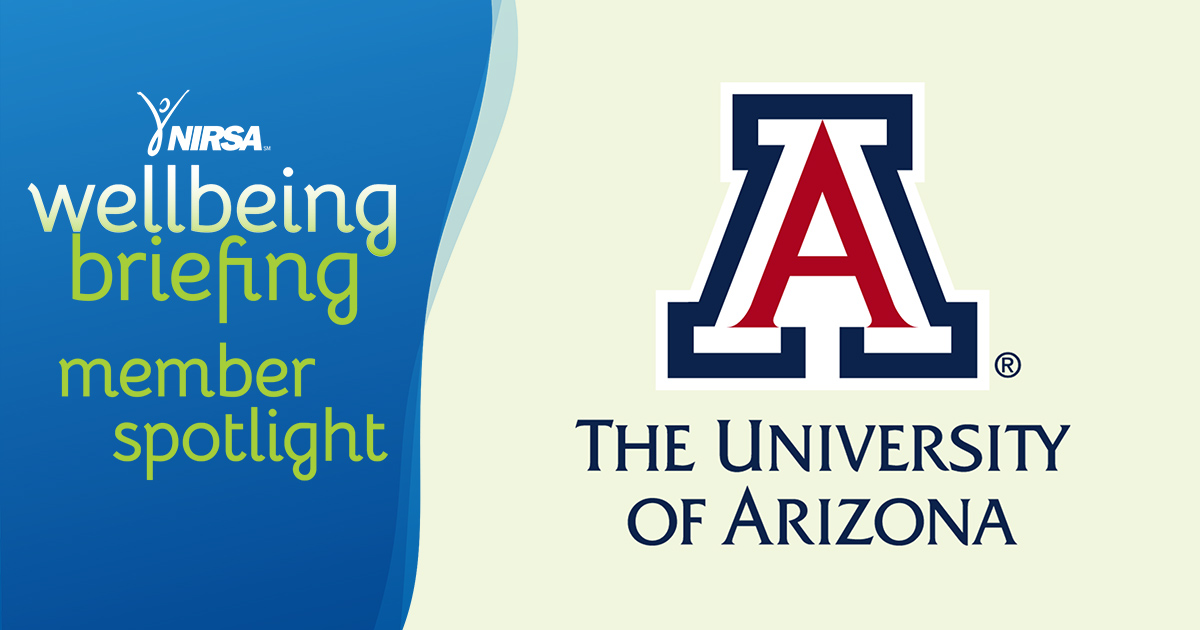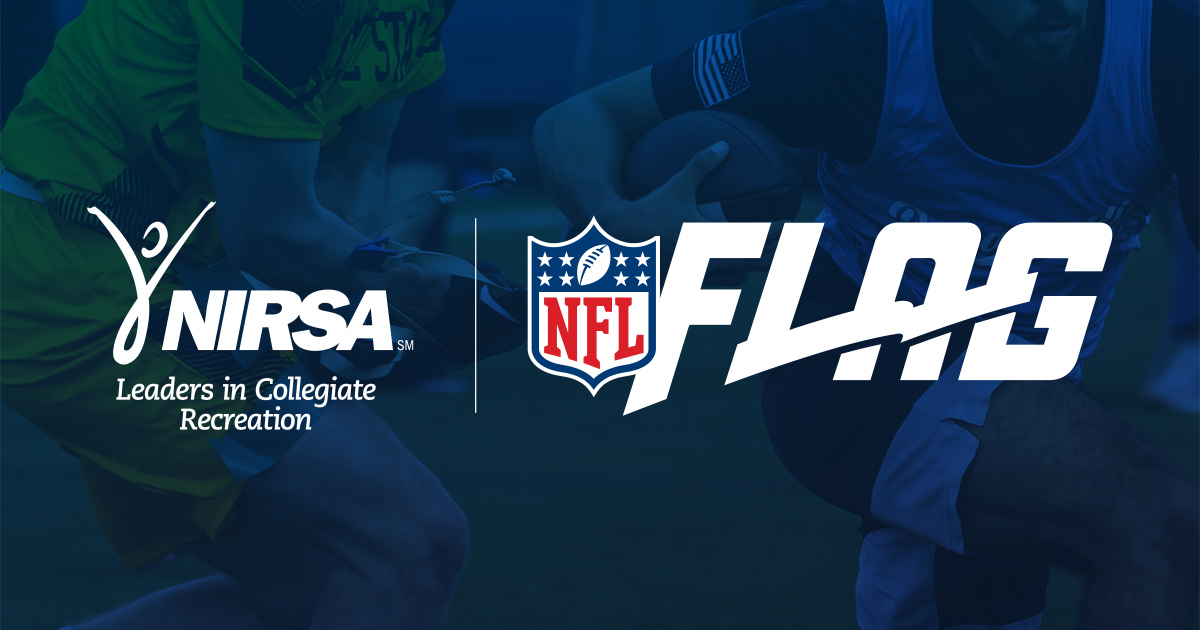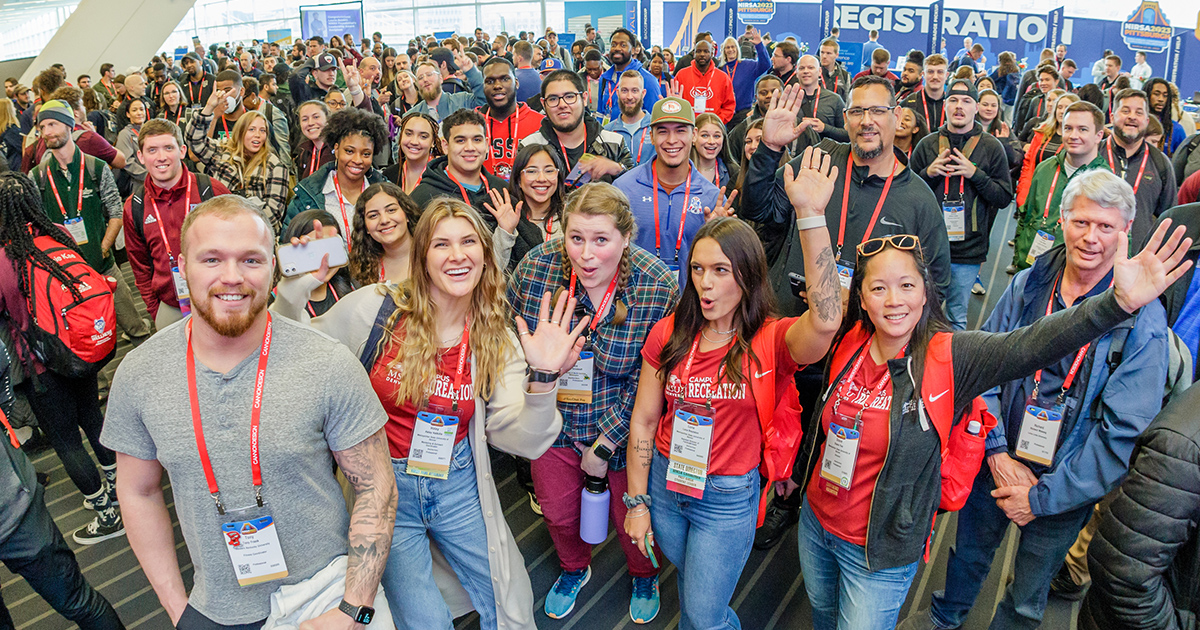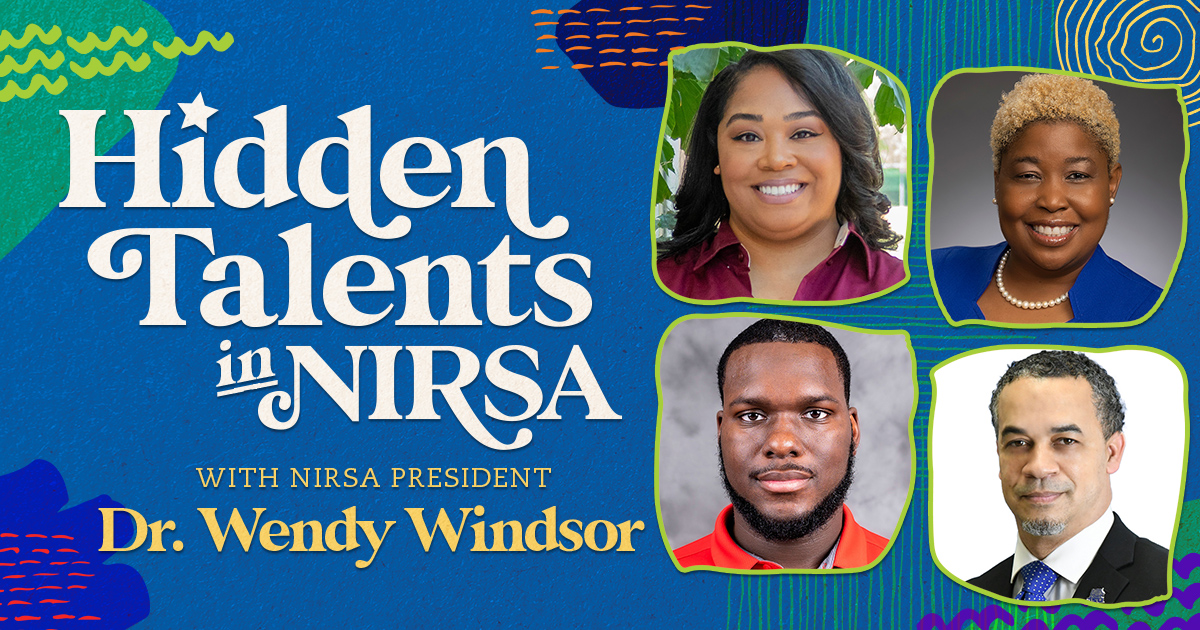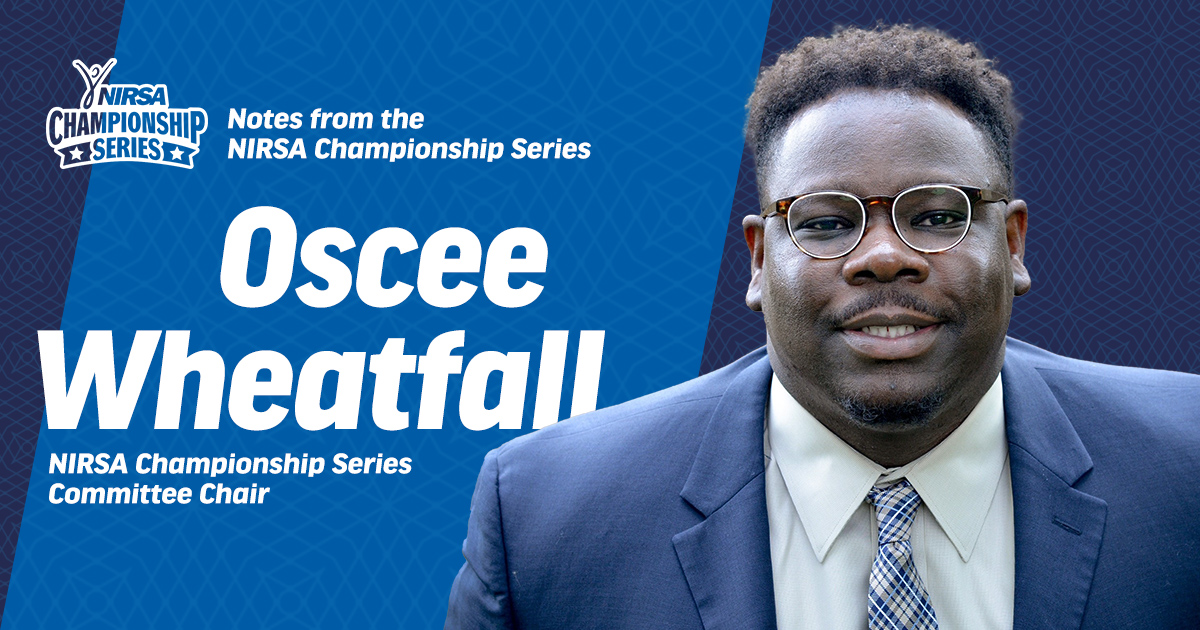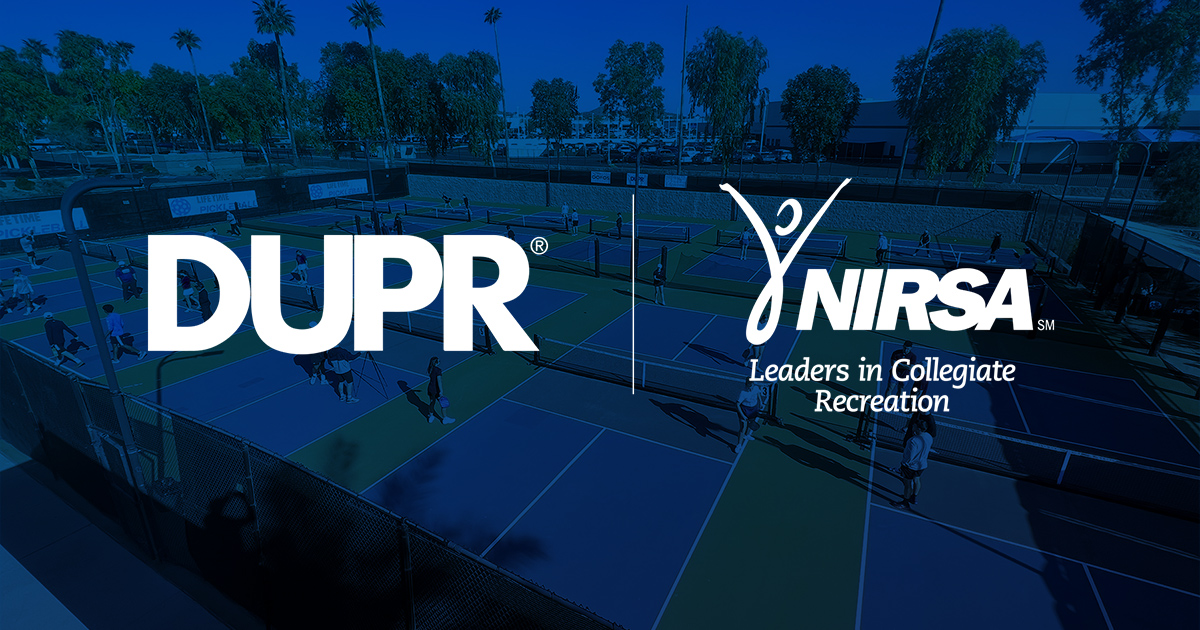As part of the March 2022 issue of the NIRSA Wellbeing Briefing, supported by the NIRSA Foundation, we reached out to Ian Escalante, Director of Esports at the University of Arizona for a question and answer session about wellbeing in esports.
Wellbeing Briefing Work Group: What are the wellbeing benefits of esports?
Ian Escalante: Essentially, at their core, esports are recreation. They take us away from the daily grind of life and take our mind off all our issues or problems. Gaming gives us something else to focus on. For participants, it is an avenue for stress relief in the same way that others find an outlet in going to the batting cages. Esports is a lot like chess or sudoku. While we may be seated and sedentary, the mind is anything but still as you’re racing though puzzle solving. You become like a quarterback diagnosing coverage schemes. It’s an exercise that demands focus and timing. But the greatest benefit of esports that I see is the sense of community—especially for those who don’t participate in traditional outdoor recreation or sports. These members of our communities still want to have a sense of belonging to something, and esports offers that opportunity to many.
How can/does campus recreation support the wellbeing of esports participants?
I think it’s important to reach out and better understand the esports space to better serve our future recreation students. Acceptance of esports goes a long way toward making esports participants feel heard and respected for the way they choose to engage in social recreation.
There are people in these sports who are used to being pushed aside because they are “the gamers.” Having somewhere on campus where the message is, “Hey, this is actually really, really cool and we’d like for you to be able to participate in a recreation you enjoy” will go a long way towards establishing much needed trust. Because you can’t just say, “We want to do esports.’’ You have to learn which esports to offer through dialogue with the students. Campus recreation can offer esports participation opportunities through intramural play, tournament invitationals, and by devoting time to understanding and supporting this type of non-traditional recreation.
What are some of the common wellbeing concerns associated with esports?
As great as esports can be, there are wellbeing concerns. I have many concerns—especially coming from a traditional sports background. Esports is dynamic for the mind, but it’s sedentary by nature and can cause a lot of physical challenges. Just because you’re not getting hit physically doesn’t mean you’re not going to do damage to your body. We see issues with backs, wrists, necks (arthritis), and we’ve even witnessed collapsed lungs before from people with poor posture.
At the University of Arizona, we’ve had to design different ways for our esports athletes to stretch and move. Esports is about mental focus, and one mistake has the potential to ruin an entire game. So you must be hyper-focused. This leads players to overuse caffeinated drinks—in particular, energy drinks. (Energy drink companies are huge advertisers for esports.) I’m not a fan of this part of the culture. Some students are chugging down energy drinks that elevate their heart rates and then sitting down. Historically, this has led to a lot of issues. For example, anxiety comes out of nowhere because their hearts are racing out of their chests and they’re not moving.
Another big concern we have with esports is since such intense focus is required—and it’s so easy to participate for long periods of time—often a lot of our athletes have trouble sleeping. Specifically, they have trouble with finding or maintaining a healthy sleep schedule. It’s the number one thing I experienced while working at Florida State and at SCAD. Sometimes, it’s not even that they’re not going to bed. It’s that they just can’t sleep. I mean, how could you? You ate like garbage. You’re loaded on energy drinks and you’re trying to go to bed with the sound cues of the game playing in your head. You close your eyes and see the game happening again and again. Being blasted with blue light in a dark room (because you must be in a dark room because any light puts glare on the screens) hopped up on energy drinks, eating poorly, awake at 2:00am after being basically blasted with the strobe light—yeah, they might have trouble sleeping.
How then have you built protective mechanisms into your program to support mental health?
At Savannah College of Art and Design we had honest and frank conversations about nutrition, health, exercise, and mental health. I treated mental health injuries the same as any other injury. So while there maybe wasn’t an obvious physical problem, I could often tell when a player was down and out. They’re just not ready to play. Have those difficult conversations with them and let them know about the resources available to assist them. Sometimes you just determine, “Hey, I think we’re going to take two weeks off. Let’s de-stress a little bit.” We implemented nutrition check-ins as well as physical exercise into our practices. It was important to take them out of the arena or reduce screen time because a lot of them wake up, go to class, participate in screen time, do homework, then return to more screen time. We must go out of our way to get them involved in other things so they’re not just hyper-focusing on sport.
What strategies have you implemented to reach individuals with disabilities?
There’s a lot of components of esports that I think are super inclusive. It’s important to make sure that these pieces are accessible and can serve people of all shapes, sizes, and abilities. Within esports, we have options for controller support for people who can’t use a mouse and keyboard. There are options for people who are colorblind. We have a lot of options with our headsets, and we can vary what frequencies we utilize. For individuals with auditory concerns, we can adjust the auditory profile to make it easier to participate. Some people see things differently. Some people need lower pixel counts. We have equipment with adjustable refresh rates. It’s about finding out what’s comfortable because not everybody’s cut from the same cloth. Also, when designing an arena, a stage, and practice areas, we’ve tried to make them easily accessible for those with wheelchairs and crutches.
How can we as rec professionals identify signs of gaming addiction?
Surprisingly, there is a lot of physical tells for gaming addiction. Weight loss or gain, difficulty sleeping, and pale, strained eyes are good examples. As addiction gets worse, irritability goes up, and focus outside of the game goes down. Worse than that, they start to be late to things, miss events because they’re gaming, are harder to reach though communication methods, start to eat out or order-in more, and generally find excuses or any opportunity to game.
Ian Escalante serves as the first University of Arizona Esports Director and can be contacted at ianescalante@arizona.edu. Visit Arizona Esports for more information on the esports program at the University of Arizona.
Lisa Williamson is currently the Assistant Director for Fitness & Wellness at the University of Georgia's Department of Recreational Sports and current co-chair of the NIRSA Wellbeing Briefing Work Group; you can email her at lisawilliamson@uga.edu.
Lindsay Brookey is currently the Assistant Director for Fitness and Wellness at the University of North Carolina – Chapel Hill; you can reach her at lbrookey@email.unc.edu.
Natalie O'Farrell is currently the Associate Director-Programs at the University of Arizona and a member of the NIRSA Wellbeing Briefing Work Group; you can email her at nfreeland@email.arizona.edu.

